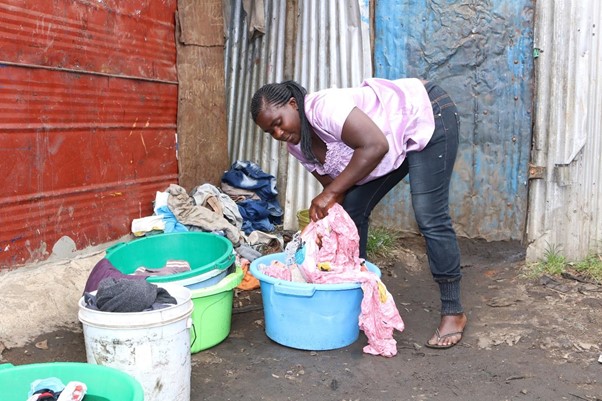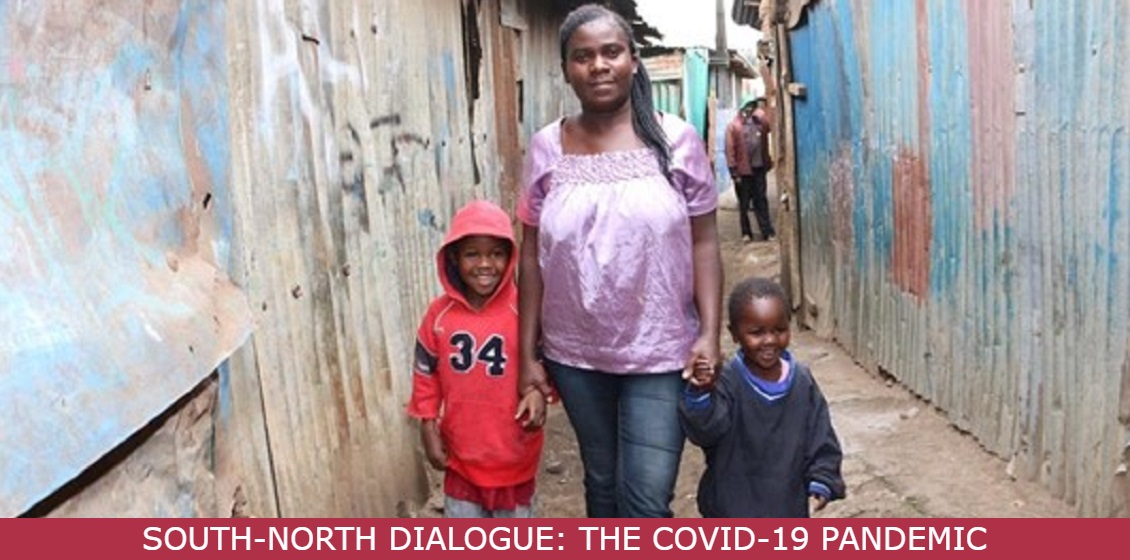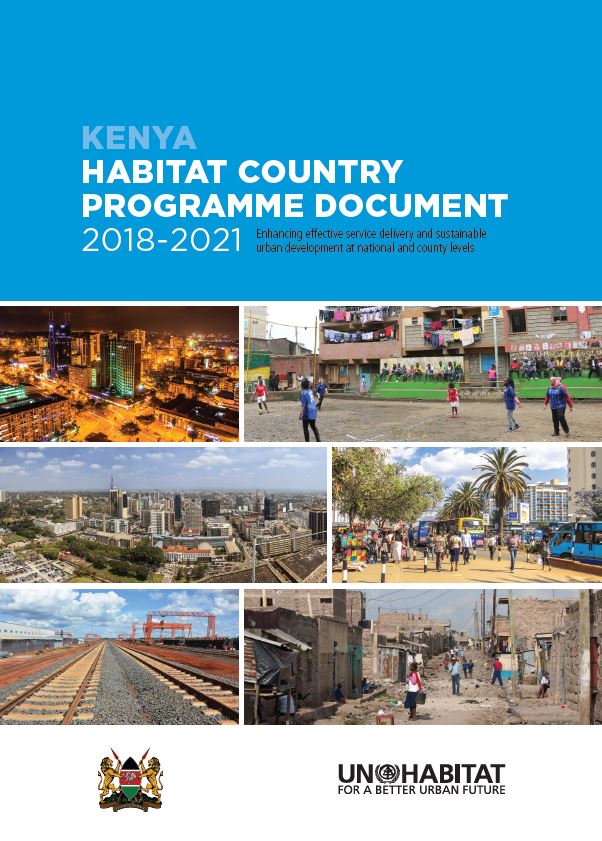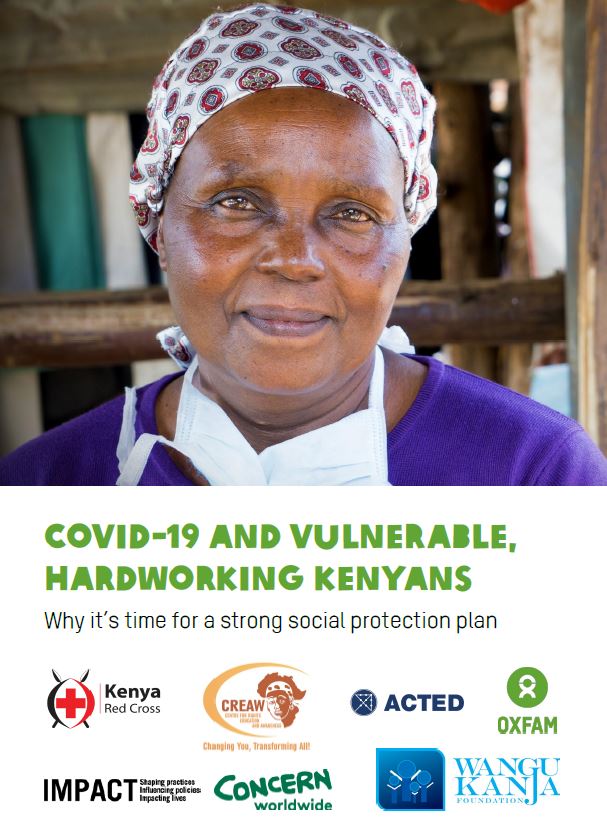The scorching sun is unforgivingly baking the ground in Korogocho slums in Nairobi with the same intensity that pangs of hunger are hitting the bellies of Joyce Khamala and her three children. To this family, lack of food is a rodeo that they are used to riding, but not as brutally as it has been since the COVID-19 pandemic hit the world. The thirty-three-year-old mother of three says that she and her children have faced all the pain that COVID-19 could inflict on anyone: death, stigma and material need.
“My husband died of COVID-19, and he was the sole breadwinner,” said Joyce.
Apart from the lack that accompanied the death of the family’s sole provider, Joyce’s in-laws believe she bewitched her husband and cut all the support to her and her children.
She said: “We go for days without food and live by the grace of God and well-wishers.”
Joyce and her children are one of the families in Kenya’s informal settlements. According to the United Nations body concerned with human settlement and urban development, UN-Habitat, there are more than 500 slums in Kenya including the largest in the continent. The slums occupy only 5 per cent [PDF] of the total residential area in the capital city of Nairobi but house more than 4 million people, 65 per cent of the city’s population. Yet, despite the large population, people living in slums are historically marginalised in government economic and health policies. This omission exposed them to more severe consequences in the wake of the COVID-19 outbreak.
The pandemic could not have come at a worse time. Kenya’s poor storage of its grains has led to losses due to contamination by Aflatoxin, toxic and deadly chemicals produced by a fungus called Aspergillus flavus. For instance, the country destroyed 13,992 [pdf] metric tonnes of aflatoxin-contaminated maize in 2014, a challenge that was reported in pockets of the country throughout 2019 to 2020. Additionally, the country recorded deficient agricultural produce due to protracted drought, floods and a locust invasion. Consequently, Kenya’s food inflation had risen between March and April 2020 to 12 per cent, hitting a three year high according to the Kenya National Bureau of Statistics (KNBS).
Joyce could not work her way out of this need. Like many women in the slums, she relies on casual labour such as washing clothes and cleaning homes for other homes. On a good day, she said, she earns about Sh200 (about US2$), barely enough money to buy a meal for her and the children. With the lockdowns and the fear of the pandemic, the homes that would provide her these opportunities shut their doors.
Before the pandemic, Joyce said that the cost of two kilogrammes of cornflour had already risen to Sh100 (approximately US1$). In May 2020, the cost of the same flour rose to Sh130 (nearly equivalent to US1.30$), a rise in prices with an instant negative effect. In July 2020, humanitarian organisation Kenya Red Cross and Concern Worldwide conducted a food security assessment[PDF] and found out that less than one per cent (0.9%) of the households were food secure. More than half (55%) were on the brink of starvation. Little has changed in August 2021 as the prices of food and nonalcoholic beverages continue to rise more than any other commodity in Kenya, according to KNBS. Expectedly, the lack of food has stopped many children, including Joyce’s, from going to school.
The pandemic exacerbated a chronic and acute shortage of food driven by, among many other factors, the government’s neglect of the people living in the informal settlements. In April 2020, the president announced tax relief to cushion the economy from the impact of the COVID-19 pandemic. But, in a move that shocked the public, members of parliament in Kenya voted to end the tax cuts in December 2020, hurting an already economically challenged population.
The challenge has continued, even throughout 2019 to 2020. The country recorded deficient agricultural produce due to protracted drought, floods and a locust invasion. Consequently, the Kenya National Bureau of Statistics (KNBS) reported that Kenya’s food inflation had risen between March and April 2020 to 12 per cent, hitting a three year high.
Like many women in the slums, Joyce relies on casual labour such as washing clothes manually and cleaning homes. On a good day, she said, she earns about Sh200 (about US2$), barely enough money to buy a meal for her and the children. Before the pandemic, Joyce said that the cost of two kilogrammes of cornflour had already risen to Sh100 (approximately US1$).
In May 2020, the cost of the same flour rose to Sh130 (nearly equivalent to US1.30$), a rise in prices with an instant negative effect. In July 2020, humanitarian organisations Kenya Red Cross and Concern Worldwide conducted a food security assessment[PDF] and found out that less than one per cent (0.9%) of the households were food secure. More than half (55%) were on the brink of starvation.
According to the national statistics, little has changed in August 2021 as the prices of food and nonalcoholic beverages continue to rise more than any other commodity in Kenya. Expectedly, the lack of food has stopped many children, including Joyce’s, from going to school.
The pandemic exacerbated a chronic and acute shortage of food driven by, among many other factors, the government’s neglect of the people living in the informal settlements. In April 2020, the president announced tax relief to cushion the economy from the impact of the COVID-19 pandemic. But, in a move that shocked the public, members of parliament in Kenya voted to end the tax cuts in December 2020, hurting an already economically challenged population.
More than a third of Kenyans –about 36.1 per cent, which is 17.1 million people – live below the international poverty line, a measure of extreme poverty defined as earning less than $1.90 a day, according to the Kenya National Bureau of Statistics. The World Bank reported that as of 2015, one in every two Kenyans were living in multidimensional poverty, a measure that uses a weighted index of ten factors related to education, health, standards of living and education.
Citizens like Joyce fall in both categories of poverty and desperately need their governments. Therefore, it was a relief when Kenyan President Uhuru Kenyatta announced on May 23, 2020, that the government would run a national cash transfer program aimed at reaching 669,000 households that the most vulnerable citizens.
Charles Lukania, a community social worker in Korogocho, would identify the families who would receive KSh1,000 (about US9$) in 35 weekly stipends for eight months. Charles said that it was a hard choice to pick from people who have faced neglect.
Lukania said: “Slum residents, already grossly affected by chronic poverty, are highly vulnerable to different forms of shock, including those arising from political instability.”
Joyce and many families missed out on the cash transfer. Instead, politicians and government officials enrolled their friends and families, according to a damning report from Human Rights Watch (HRW).
“Some people committed suicide when they failed to provide for their families,” said social worker Lukania.
Amidst the gloom and dread, there are some organisations that provided cash transfers to cushion households from starvation during the pandemic successfully such as Action Against Hunger every month to families in arid and semi-arid counties in Kenya such as Isiolo.
Verah Okeyo is a global health journalist and communications specialists based in Kenya
Also read: The fresh food in this outdoor fridge is for everyone who need it and “Ollas Comunes” in Chile in times of the “new normal”
SUPPORT DDRN SCIENCE JOURNALISM. DONATE DKK 20 OR MORE![]() (APPLICABLE IN DENMARK ONLY)
(APPLICABLE IN DENMARK ONLY)
Live webinar: The impact of Covid-19 on food provision
Time: Thursday 18 November 2021,12:30 am (GMT+1)
Presenters: Verah Okeyo, Kenya; Marta Apablaza, Chile and Irene Valentina di Lauro, Denmark.
Place: Online (Zoom), Register by e-mail: info@ddrn.dk






